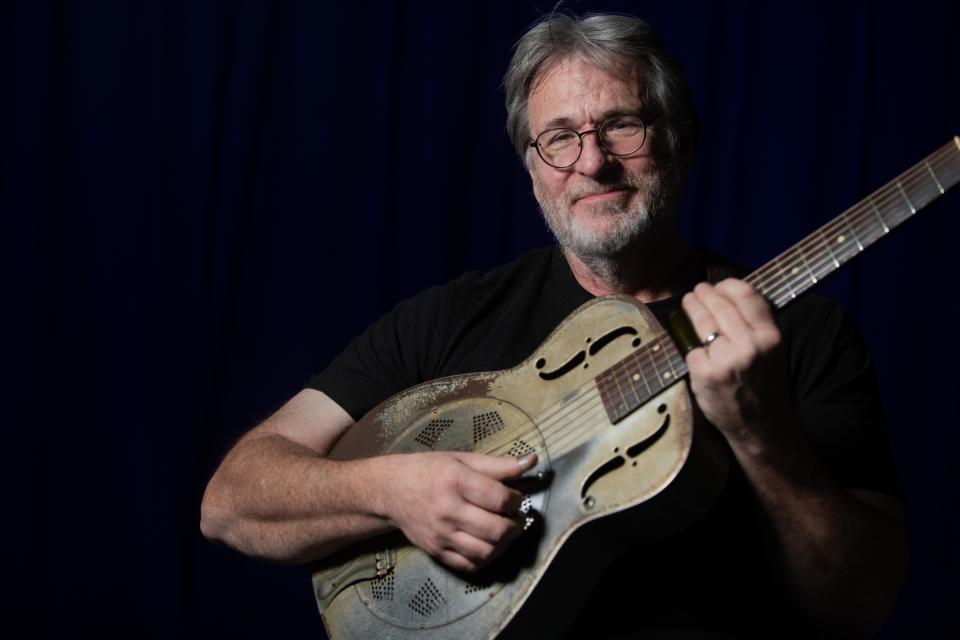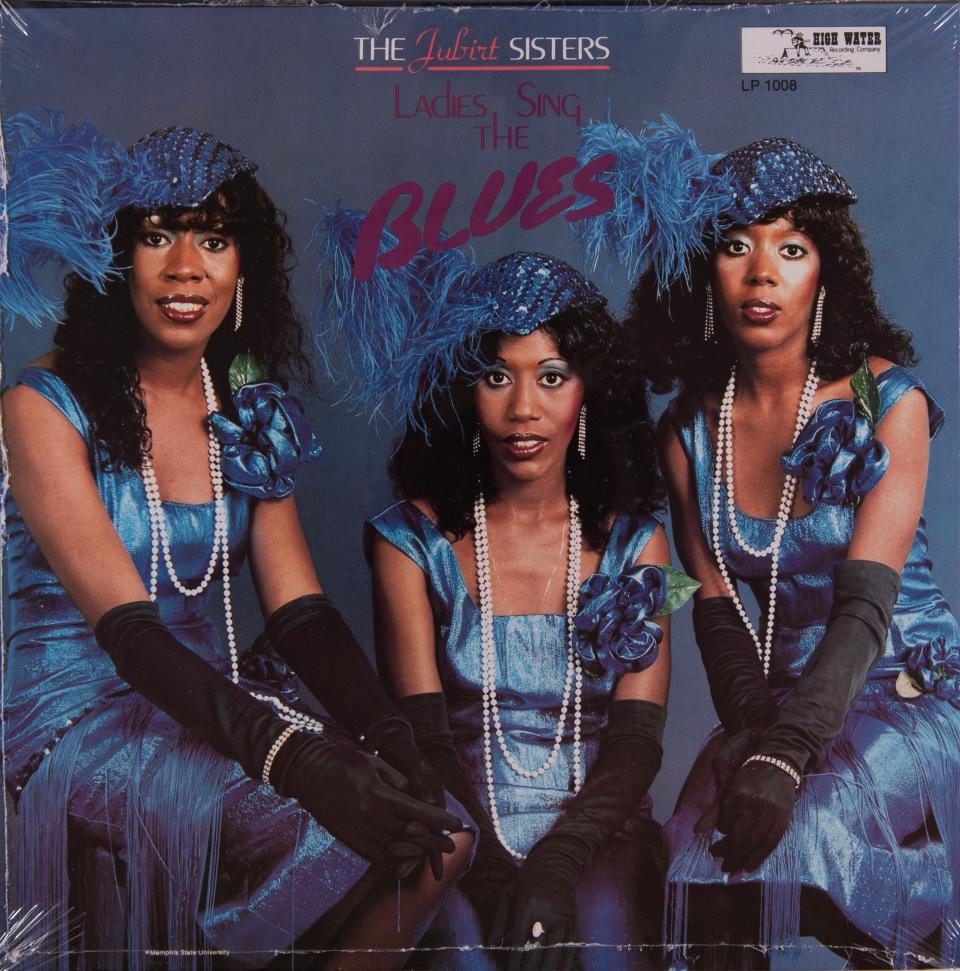Blues for the eyes as well as the ears in new exhibit at U of M
“I came to Memphis for a reason,” says Bill Ellis. “Memphis was my mecca.”
This weekend, Ellis — who for a decade covered the local music scene as a reporter with The Commercial Appeal, writing about everyone from ancient rockabilly warriors to emerging hip-hop innovators — returns to his former home base as the curator of a show that unites his passions for visual and musical art.
“Build a Heaven of My Own: African American Vernacular Art and the Blues” opens Saturday and runs through June 24 at the Art Museum of the University of Memphis, located on the U of M campus just south of Central Avenue.

Showcasing more than 70 pieces that span the 19th to 21st centuries, the show celebrates the mostly self-taught artists of Memphis, the Mid-South and the Mississippi Delta whose jugs, quilts, homemade musical instruments, paintings, sculptures and other works connect with what Ellis calls the region’s “blues culture.”
Some of the connections are explicit. The show includes a painting by Memphis-based Frank Lilly titled “Lenzie Receives a Blues Lesson from Furry Lewis”; a guitar (or “chicantar”) made from a gas can by Clarksdale blues player James “Super Chikan” Johnson; and a pair of clay skulls plus a casket containing a life-sized clay body sculpted by Leland, Mississippi, blues great James “Son Ford” Thomas, a professional gravedigger who "dealt with life and death in very real terms,” Ellis said.
Book news: How 'Memphis' author went from 'poor, poor, poor' to literary smash with debut novel
Entertainment news: Katori Hall talks 'P-Valley', Tina Turner musical and impacting culture
Other artworks reveal the shared experiences and cultural contexts of struggling artists who — like blues musicians — were inspired to express themselves creatively, by any means necessary. Undeterred by a lack of formal training or economic resources, they "found a way to imbue meaning in their life through art,” Ellis said.
Meanwhile, some pieces suggest real-life concerns that may give viewers the blues, to put it mildly. For example, a patch quilt by Sarah Mary Taylor of Yazoo City is covered with stitched images of guns.
“I don’t know if there’s been a show like this one yet, anywhere,” Ellis said, comparing the “conversation” the exhibit arranges between visual and musical expression to the “call and response” of blues and gospel.
"The blues was a primary genre for entertainment and for messaging in Black communities,” Ellis said. “So in this mostly self-taught community of artists, you find visual correlations in the art to the music — repetition and riffing,” along with various themes, such as “motion.”

He cited the work of the late Hawkins Bolden, a blind Midtown sculptor who included discarded hubcaps and tennis shoes in his work. “He mostly listened to gospel music and baseball, but the materials he used suggest motion, which is one of the central motifs and themes in blues — leaving a bad situation, for example, by car or train or horse or foot. It was a music made by itinerant musicians, after all.”
Ellis was invited to curate the University of Memphis show by Leslie Luebbers, museum director. Some of the works are from museums (the Delta Blues Museum in Clarksdale provided the casket), but most of the items were borrowed from collectors, from the Delta to New England.
But the show is not alone. Borrowing its title from a Lightnin’ Hopkins song, “Build a Heaven of My Own” is only the centerpiece of a trio of complementary exhibits that open Saturday at the U of M Art Museum.
Curated by John Shaw, “Blues at Nightfall: High Water Records” is a celebration of the university’s High Water Records label, founded in 1979, which has produced significant albums by such area artists as the Fieldstones and the “She-Wolf” of North Mississippi’s hill country, Jessie Mae Hemphill.

The third exhibit, “High Waters Record Re-Imagined,” features new work, inspired by the record label, that was created by U of M art school undergraduates.
Together, the exhibits function as a tribute to professor emeritus and High Water co-founder David Evans, whose research into the blues and the folk music of cultures worldwide made the University of Memphis an international leader in “ethnomusicology."
Memphis Music Icons: Meet the titans and pioneers of the blues, the city's defining genre
Memphis music: Ardent sets record straight on its future. How Memphis studio is planning for a rebirth.
The Virginia-born Ellis, 59, said Evans’ presence in the blues/rock “mecca” of Memphis helped him decide to apply for the job of covering the music beat (pun intended) for The Commercial Appeal, after several years studying and teaching in Japan.
He worked at the newspaper from 1996 to 2005, trading journalism for a more formal brand of scholarship: Studying with Evans, he earned a doctorate in ethnomusicology in Memphis, while minoring in art. He now is an associate professor and chair of the fine arts department at St. Michael’s College in Colchester, Vermont, where he lives with his wife, mental health counselor Julie Coffey, and 16-year-old daughter, Jessa.
“I always was aware of the immense musical culture of the region, but when I moved to Memphis from Japan, one of the things I quickly became aware of was the visual culture — the self-taught artists, the personal artists, the incredibly creative people who were driven to create art," Ellis said.
He said this type art is sometimes referred to as “visionary art,” sometimes “outsider art,” sometimes “folk art,” but he generally prefers the less limiting term “self-taught art” (although a few of the artists in the U of M exhibit did receive some formal training).
Ellis does not only write about and teach classes about music; he also creates it. Distributed by Memphis-based Yellow Dog Records, Ellis’ fourth album of original music, “Ghost Hymns,” is due for release in June. Like its predecessors, it will be credited to his more formal full name, William Lee Ellis.
On one tune, Ellis said, he plays a Civil War-era fretless banjo, like a chip off the old roots-music block he is: Bill Ellis is the son of the lauded banjo player, Tony Ellis, a veteran of bands led by everyone from Bill Monroe to Steve Martin.
The Art Museum at the University of Memphis is open to the public from 9 a.m.-5 pm. Monday-Friday. Admission is free. For more information, visit memphis.edu/amum/ or call 901-678-2224.
This article originally appeared on Memphis Commercial Appeal: Blues art exhibit opens at University of Memphis Art Museum

